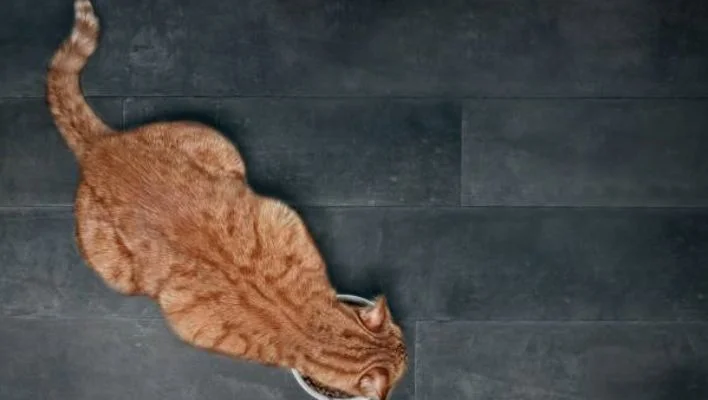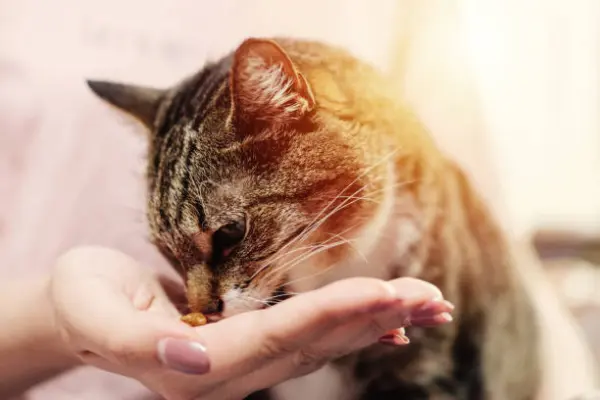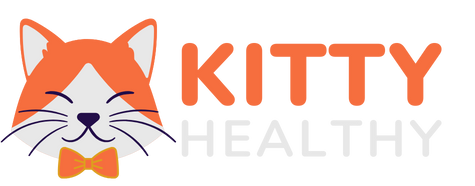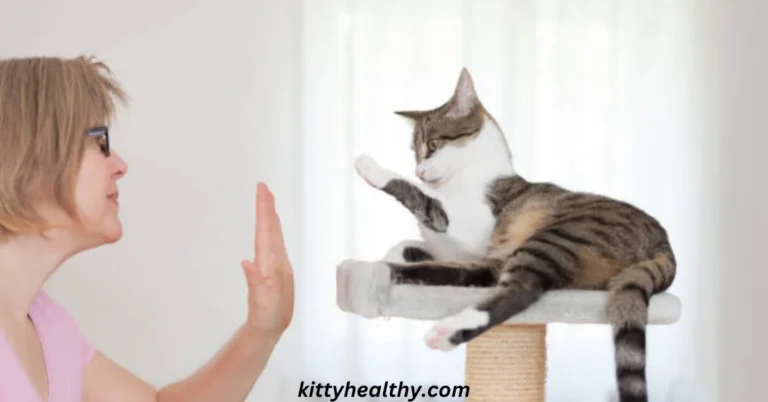Xanthan Gum Safety And Usage For Cats: Its Safety And Efficacy
Xanthan Gum Safety And Usage For Cats is an important subject for those who care for felines, as xanthan gum, frequently used in human food as a thickening agent, shows varied effects in cats.
This substance, created through microbial fermentation, isn’t inherently harmful to cats but can lead to gastrointestinal issues like diarrhea or discomfort in some cases.
Given the distinct physiological and nutritional needs of cats, their reaction to this additive may differ from humans.
Therefore, it’s prudent for cat owners to cautiously introduce xanthan gum-containing cat food into their pet’s diet, observing any signs of digestive distress or allergic reactions.
Continual vigilance and gradual dietary adjustments are key to ensuring the wellbeing of cats when considering the inclusion of xanthan gum in their meals.
As a conscientious pet owner, it’s important to investigate the complexities of xanthan gum – understand its origins, consider safety, explain its role in cat’s food, and let’s discover useful tips you will use responsibly.

What is Xanthan Gum
Xanthan gum acquired by sugar fermentation is a polysaccharide acknowledged for its super stability and consistency. In the ever-changing panorama of the pet food industry, xanthan gum has found its way into some cat ingredients.
To recognize the protection functions and Xanthan Gum Safety And Usage For Cats, we must look at its properties and how it interacts with the cat’s digestive machine.
Is Xanthan Gum a Source of Nutrition?
Xanthan gum is not always the only source of essential vitamins. A complicated mountain carbohydrate, Xanthomonas campestris is the bacterium that produces this sugar.
Xanthan gum is often used within the food commercial enterprise as a thickening and stabilizer, even though it lacks important components like protein, minerals, and vitamins.

The major goal of adding xanthan gum to dog products, including cat chow, is to improve texture and consistency. This can shield objects from edges and fissures, allowing pets to enjoy common ingredients more.
While xanthan gum has no nutritional value and is generally considered safe to consume in moderation, pet owners should focus on their pet’s unique sensitivities and ensure new foods containing xanthan gum are safe gifts, as with any dietary supplement, including food.
Xanthan Gum in Human vs. Cat Diets
This table outlines the key differences in the use and impact of xanthan gum in human and cat diets.
| Aspect | Human Diet | Cat Diet |
|---|---|---|
| Usage | Common thickener in sauces, dressings, and gluten-free products. | Sometimes found in wet cat foods and treats. |
| Digestibility | Generally well tolerated, rarely causes digestive issues. | Can lead to digestive upset in some cats. |
| Nutritional Benefit | Adds texture, no significant nutritional value. | No nutritional value, used for texture or consistency. |
| Allergic Reactions | Rare, but can cause allergies or sensitivities. | Potential for allergic reactions or sensitivities. |
| Recommended Intake | No specific limitation, used in moderation. | Should be introduced gradually, if at all. |
xanthan gum Potential Health Impacts on Cats
In some cats, this food additive may lead to digestive issues, such as stomach upset or diarrhea, especially if introduced suddenly or in large amounts.
Each cat’s tolerance to xanthan gum can vary, and some may experience no adverse effects, while others could show sensitivity. Long-term effects of xanthan gum consumption in cats are not well-documented, so caution is advised.
It’s essential for cat owners to observe their pets closely when feeding them foods containing xanthan gum and consult with a veterinarian if any concerning symptoms arise.
The primary focus should always be on providing a balanced diet that caters to the specific nutritional needs of felines.
Safety Considerations for Cats
When it comes to the safety of cats, certain precautions are essential. Cats have specific dietary requirements and sensitivities, making it crucial to ensure that their food is free from harmful substances.
Regular vet check-ups are important to monitor their health. At home, creating a safe environment means keeping potentially toxic plants, human medications, and small, ingestible objects out of reach.
It’s also important to provide a stress-free living space, as stress can significantly impact a cat’s well-being.
Understanding and respecting a cat’s nature, such as their need for exercise and mental stimulation, plays a vital role in maintaining their health and safety.
xanthan gum Appropriate Usage in Cat Food
Beyond its thickening capabilities, xanthan gum is employed to enhance the texture and consistency of cat food. Wet cat food contributes to creating an enticing texture, potentially increasing palatability.
As a stabilizing agent, xanthan gum prevents ingredient separation in cat food, particularly in wet or canned formulations. Consistency is paramount for both taste and visual appeal.
Homemade Cat Treats and Xanthan Gum
Homemade treats for your cat can benefit from xanthan gum, but caution is advised. Its potent thickening nature should be harnessed sparingly to avoid altering the treat’s texture, potentially leading to digestive issues.
Moreover, achieving a well-balanced formulation involves the strategic use of xanthan gum in homemade cat treats. Pair it with other safe and nutritious ingredients to offer a wholesome and delightful treat.
Transitioning Cats to Foods Containing Xanthan Gum

Introducing cat food with xanthan gum requires a gradual approach. Mix a small amount with your cat’s current food, closely monitoring for adverse reactions before a complete transition.
During the transition, keenly observe your cat’s behavior. Any signs of distress or rejection of the new food may necessitate reevaluating and considering alternative options without xanthan gum.
Alternatives to Xanthan Gum for Cats
For cat owners seeking alternatives to xanthan gum, there are several options that ensure safety and nutritional adequacy.
Natural thickeners like guar gum or carrageenan can be used in cat foods, as they are generally well-tolerated and less likely to cause digestive issues.
Additionally, choosing cat foods that rely on natural ingredients for consistency, such as meat-based broths or purees, can be a healthier choice.
It’s always important to select cat food that adheres to the nutritional requirements of cats, focusing on high protein content and minimal additives.
See also: Can Cats Eat Pomegranate?
FAQs
Xanthan gum makes things thicker and more stable. It is often put into canned foods to keep them thick and stop the ingredients from separating. It’s thought to be safe for dogs, but megadoses make them have diarrhea.
Xanthan gum in food amounts is LIKELY SAFE to eat. Taking up to 15 grams of it every day as medicine is also LIKELY SAFE. Some side effects can happen, like gas and bloating in the gut.
Xanthan gum is a polysaccharide, which is a type of sugar that is fermented by a bacteria called Xanthomonas campestris. A lot of leafy plants, like cabbage, broccoli, and Brussels sprouts, get diseases like black rot and bacterial wilt from Xanthomonas campestris.
Almost everyone’s diet and way of life can benefit from xanthan gum. It’s vegetarian, halal, kosher, gluten, keto, and paleo friendly.
Conclusion
Finally, xanthan gum can be safe and beneficial to your horse’s diet if used properly. Responsible pet owners should know about little safety risks and utilize xanthan gum properly to preserve your dog’s health. Following cautious, balanced procedures will ensure your horse’s meal fits their nutritional demands and increases their health and happiness.






